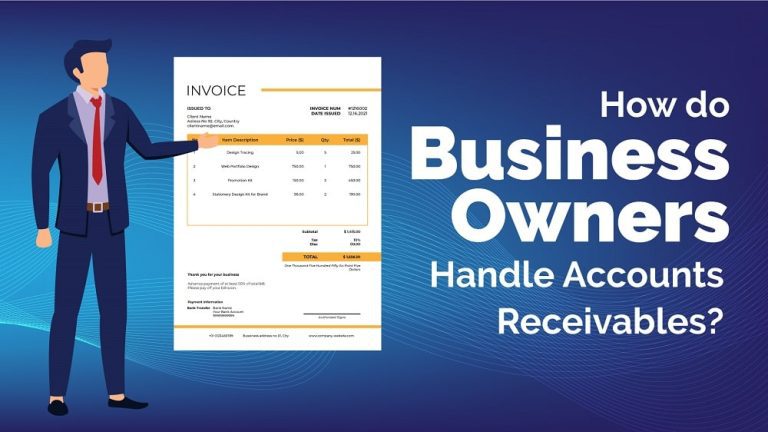Accounts receivable are outstanding invoices or the amount of money owed to an organization by its customers for providing goods or services on credit. In simple words, when a company sells their products and customers cannot pay on time or ask to pay later, that situation is counted as an account receivable in the business accounting.
Companies must look for proper and accurate account receivables management to avoid any losses and maintain accounts efficiently. There are some ways that businesses can practice to handle their accounts receivable precisely that you’ll learn about later in this article post.
Let’s understand accounts receivable deeply.
What is accounts receivable?
When an invoice or bill is sent to the consumers if they buy products or services on credit is called an Account receivable until the amount is paid by them.
Account Receivables are mentioned as a current asset on the Balance Sheet, hence they may convert into cash in the future which generally occurs within a set time frame or based on payment terms & conditions.
Handling account receivables appropriately is essential and must be managed with care as it reflects the cash from of a company. Furthermore, it also bears the responsibility of revenue generation and minimising a cash crunch necessitates recovering timely, otherwise, the credit may require irrecoverable losses to your business.
Maintaining the accounts receivable process perfectly is important and a must to manage with care as it impacts the cash flow of a business. Moreover, it also is responsible for revenue generation and to avoid a cash crunch, needs to be collected back on time, otherwise, the credit may demand an irreparable loss to your SME business.
Several Account Receivable collections strategies that businesses can use to handle their accounts receivable:

1. Setting Credit Guidelines
This means framing clear policies for payment, like the duration within which a customer has to pay and any fine for paying late may apply.
2. Invoicing Instantly
It’s crucial to share invoices with customers as soon as products or services are delivered or taken so that you can collect the payment timely.
3. Update on Overdue Payments
If a customer has not paid the due payment on time according to framed guidelines, it’s important to follow up with them to make payment for their outstanding balance. This will allow you to know the potential issues that they face while paying.
4. Offering Incentives on Instant Payment
Businesses sometimes offer discounts on early payment to customers, encouraging prompt payment and minimizing the late payment possibilities.
5. Installing a Credit & Collections Solution
A credit and collection solution may assist companies in accounts receivable and payment tracking, and following up on overdue payments in an organized and accurate manner.
Significant account receivables management is essential for your business’s financial health and to ensure the business has enough cash it requires to fulfil its financial growth and obligations.
The Benefits of Accounts Receivable Management
A fine Account Receivables Management can bring various perks to your business. A few mere benefits are as below:
Enhanced Cash Flow
An organization can maximize its cash flow and minimise the risk of financial strain by quickly pursuing due or non-pain invoices and executing payment collection strategies or other methods as necessary.
Improved Efficiency
Handling AR by automating the accounts receivable process with the help of robust software for tracking and managing invoices may assist a business in operating more effectively and decrease the error risks.
Stronger Bond with Customers
By instantly resolving billing problems and cooperating with clients to sort out disputes, a business can improve its customer relationship and gain their trust.
Minimize Administrative Burden
Simplifying accounts and receivable procedures may help a company save time and lower the administrative burden on its employees, freeing up them to concentrate on important tasks.
Maximize Profitability
By reducing unpaid invoices and improving cash flow, a business may enhance the possibility of higher profitability and get better financial outcomes.
Best Practices to Manage Accounts Receivable

Creating a firm accounts receivable solution can help you cooperate with customers who demand extra time to receive services. As a result, the profitability of your domestic service sectors will increase. The best methods for managing the accounts receivable process are as follows:
1. Frame a credit policy
Most successful businesses have well-defined credit policies that ensure the types of customers eligible for net terms and those required to settle their accounts promptly in full. By framing a credit policy and making your employees and customers aware of it, you can successfully lower the chances of giving credit to those customers who are less likely to refund the amount. If the policy is clear and precise, your staff won’t feel guilty denying credit to certain customers and the customers won’t also feel that they’re being biasedly treated.
2. Offer discounts on early payments
Establish discount offers for customers if they pay on invoices early. For an account receivable example, you can offer discounts on bulk or multiple quantities, like a 20% discount on selling 10 units at once. Otherwise, the full amount will be paid within 30 days.
You might not convince every customer to avail benefits of an early payment discount, but you will probably convince some of them.
3. Make payment easy
Offer your customers diverse payment options that will be more likely to recover account receivable collections on invoices timely. For instance, if some customers are not able to pay via check or cash, you can implement online payment portals that are 24/7 available. Consider as many payment options as practically possible.
The easier the payment process, the quicker you will receive the payments.
4. Easy procedures to follow up on late payments
Since assuming that some of the customers will not make payments timely is safe, your Account Receivables management policies must add a comprehensive plan outlining how your accounting team must address late payment issues.
For an account receivable example – assume your policy can direct the AR team to mail accounts with overdue payments after one week of the due date and again the next week if payment is not received. If emails are not responded to, a team member can call to the account to inform them of the terms & conditions of violence.
If it doesn’t work out, the situation must be escalated to an account manager or sales team for necessary action.
5. Automate accounts receivable
Account receivable automation solutions offer companies real-time access to cash inflows. Rather than spending hours searching for information, AR teams, sales, teams, or executives can find the insights they require whenever they want.
A savvy AR platform connects your different systems – ERP, CRM, & billing software – and provides easily readable dashboards in one centralized platform. As a result, the organization may offer transparent communication between the finance and sales departments, offering every employee the data they require to do the optimized work.
For instance, by integrating with MargBooks, businesses can streamline their financial processes and ensure easy synchronization of complex data, increasing overall productivity and efficiency.
Also Read:
How to Integrate Cloud-Based Accounting Software into Your Business
How to Prepare Final Accounts
What is Online Accounting Software?
Exploring Basics of Accounting Terminology
Frequently Asked Questions
What is Accounts Receivable?
The accounts receivable process includes the overdue amount on invoices or the sales on credit. In simple words, Account Receivable is when you sell your products or services on credit or the customer asks to pay the amount later, such event is called as account receivable.
What is the effective management of accounts receivable?
Payments for accounts receivable must be recovered, and a significant aspect of impactful management is a finely run accounts receivable collections process. This entails issuing dunning letters, which are notices for collection sent to consumers elaborating that a payment they owe is unpaid.
What are the types of receivables?
There are various types of accounts receivables, each shows a unique scenario of credit given to customers. Some mere types include:
1. Trade receivables
Trade receivable is the amount clients owe for selling products or services as part of the business course.
2. Non-trade receivables
Non-trade receivables include amounts owed to the business or trade that are not related directly to its main operations, such as interest receivables, tax refunds, or reimbursements from their parties.
3. Secured receivables
Secured receivables are generally backed by collateral which means that the company holds long as well as short-term assets or guarantees as security if the client is not able to pay.
4. Unsecured receivables
Unsecured receivables don’t have any attached specified collateral, making them more riskier for the business at the time of non-payment.
What is the main goal of accounts receivable?
The main goals of accounts receivable focus on three areas: increasing revenue, cutting costs, and enhancing customer relations. To enhance revenue, businesses demand to ensure delivering invoices instantly and that payments are collected in the earliest possible time.




